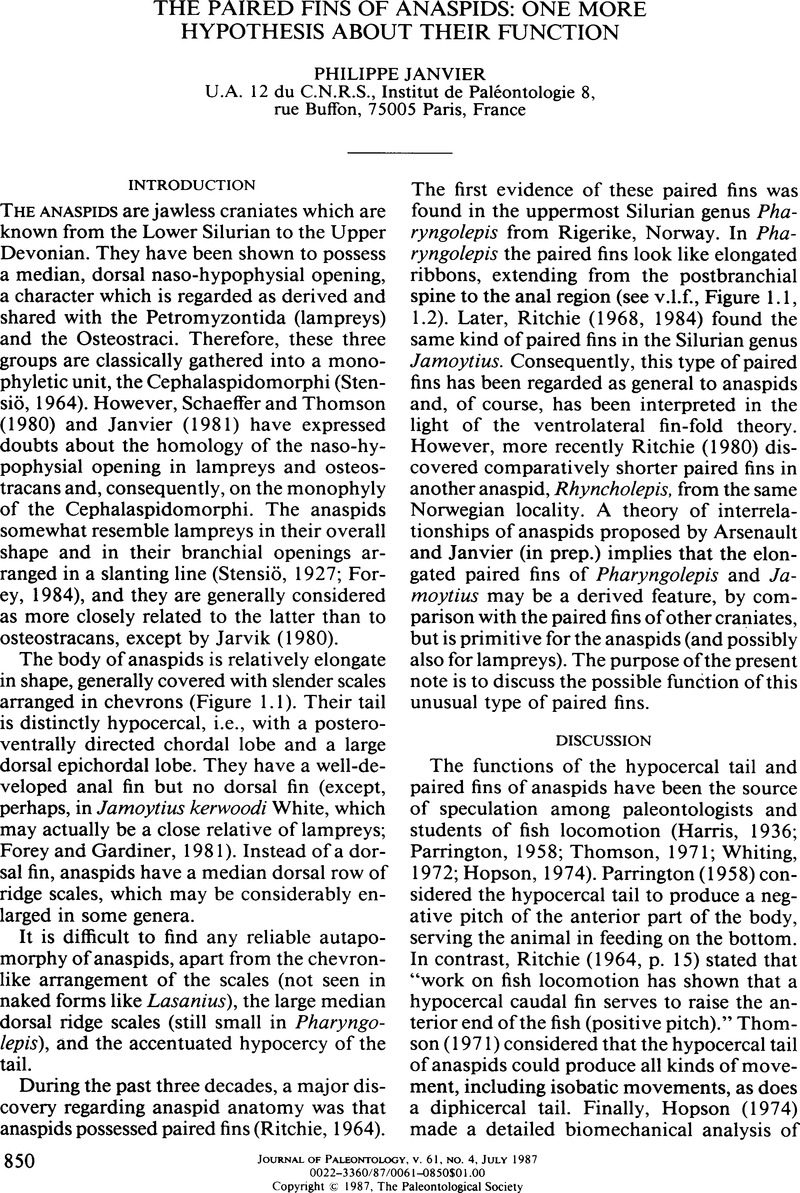Crossref Citations
This article has been cited by the following publications. This list is generated based on data provided by Crossref.
Forey, P. L.
1995.
Agnathans recent and fossil, and the origin of jawed vertebrates.
Reviews in Fish Biology and Fisheries,
Vol. 5,
Issue. 3,
p.
267.
Stewart, Thomas A.
and
Hale, Melina E.
2013.
First description of a musculoskeletal linkage in an adipose fin: innovations for active control in a primitively passive appendage.
Proceedings of the Royal Society B: Biological Sciences,
Vol. 280,
Issue. 1750,
p.
20122159.
Fletcher, Thomas
Altringham, John
Peakall, Jeffrey
Wignall, Paul
and
Dorrell, Robert
2014.
Hydrodynamics of fossil fishes.
Proceedings of the Royal Society B: Biological Sciences,
Vol. 281,
Issue. 1788,
p.
20140703.
Larouche, Olivier
Zelditch, Miriam L.
and
Cloutier, Richard
2019.
A critical appraisal of appendage disparity and homology in fishes.
Fish and Fisheries,
Vol. 20,
Issue. 6,
p.
1138.
Reeves, Jane C.
Wogelius, Roy A.
Keating, Joseph N.
Sansom, Robert S.
and
Cavin, Lionel
2023.
Lasanius, an exceptionally preserved Silurian jawless fish from Scotland.
Palaeontology,
Vol. 66,
Issue. 2,
Bayramov, A. V.
Yastrebov, S. A.
Mednikov, D. N.
Ermakova, G. V.
and
Zaraisky, A. G.
2024.
The Origin and Mechanisms of Development of Paired Fins in Vertebrates.
Russian Journal of Developmental Biology,
Vol. 55,
Issue. 3,
p.
99.
Bayramov, Andrey V.
Yastrebov, Sergey A.
Mednikov, Dmitry N.
Araslanova, Karina R.
Ermakova, Galina V.
and
Zaraisky, Andrey G.
2024.
Paired fins in vertebrate evolution and ontogeny.
Evolution & Development,
Vol. 26,
Issue. 3,



